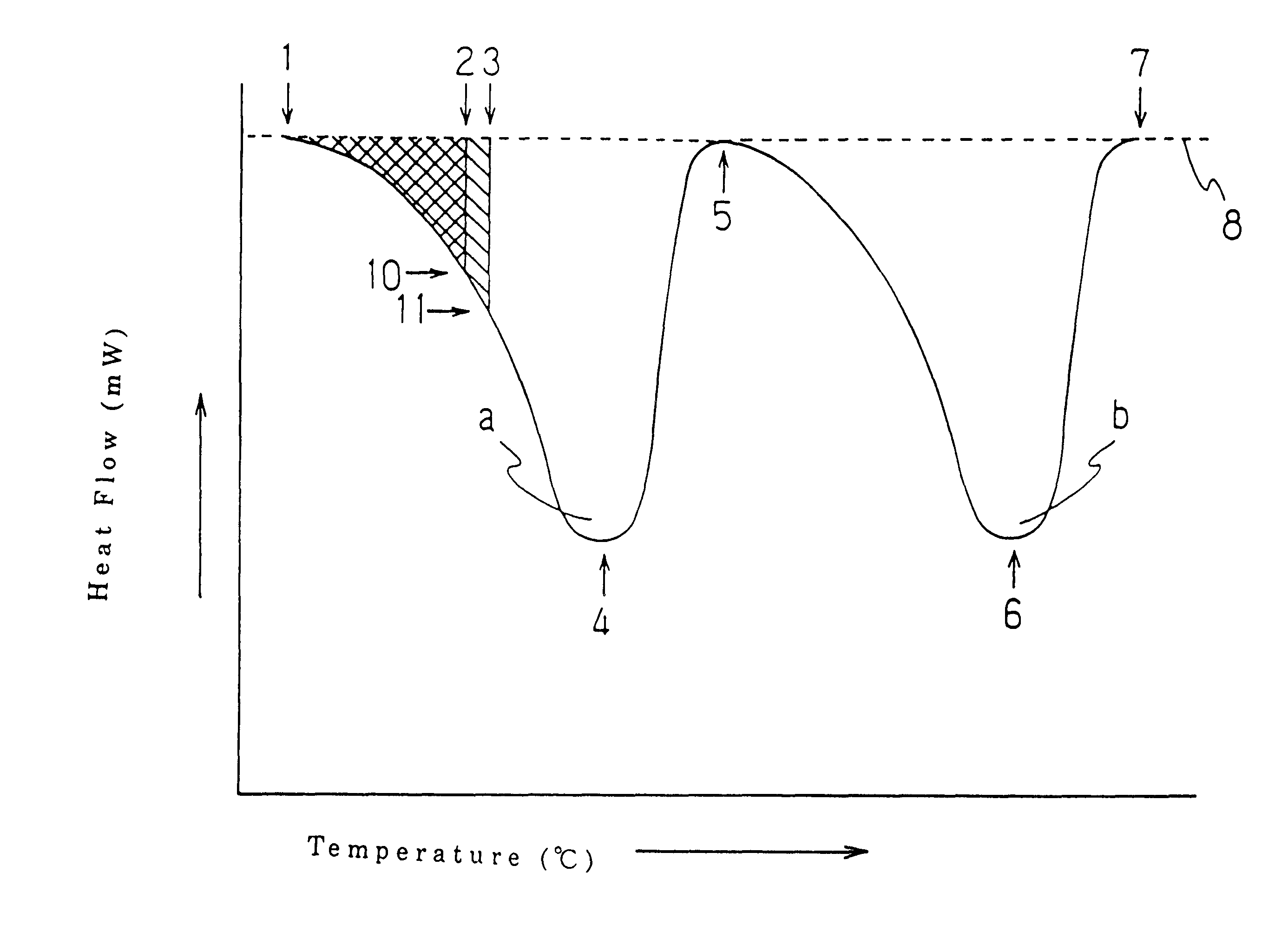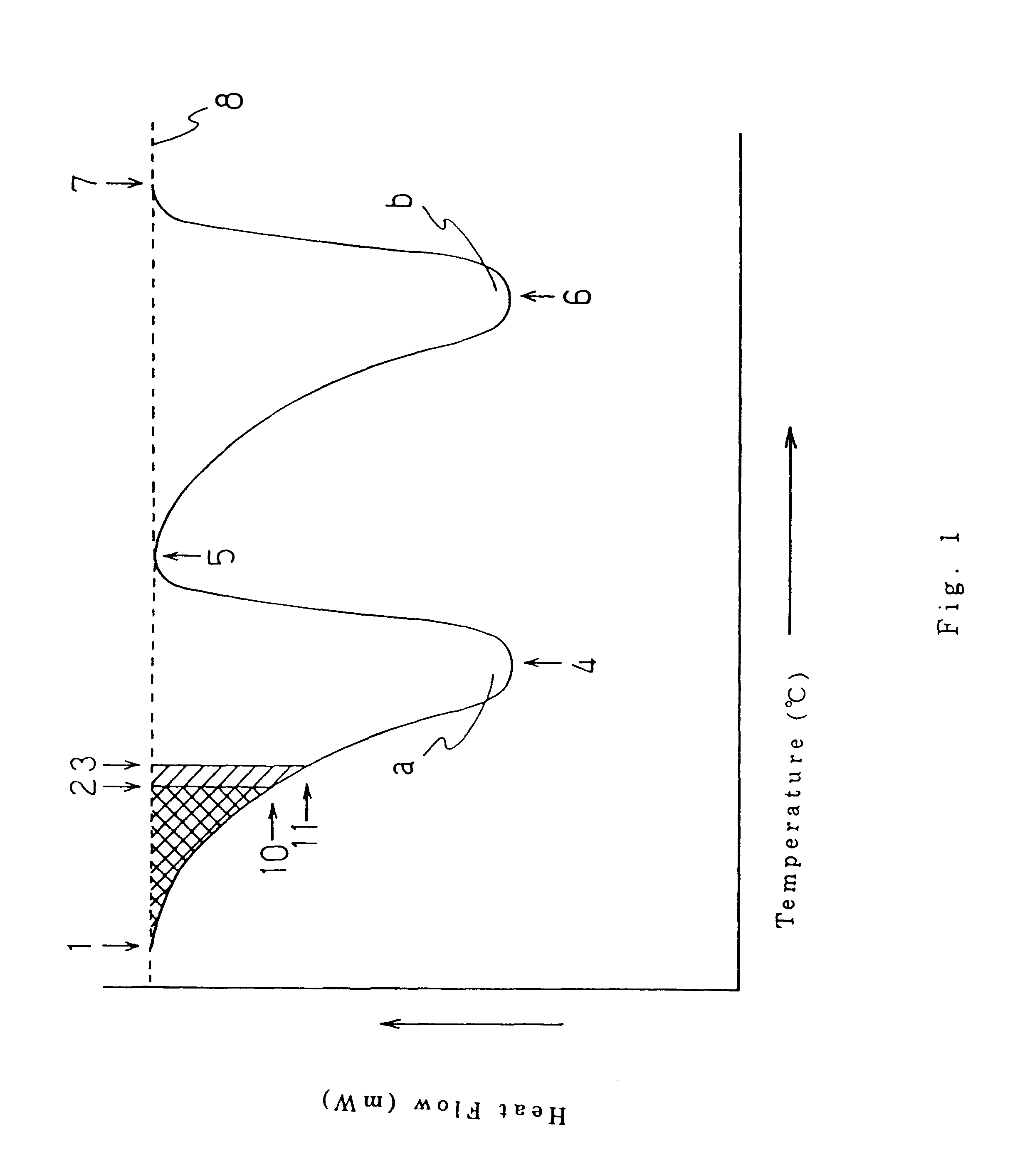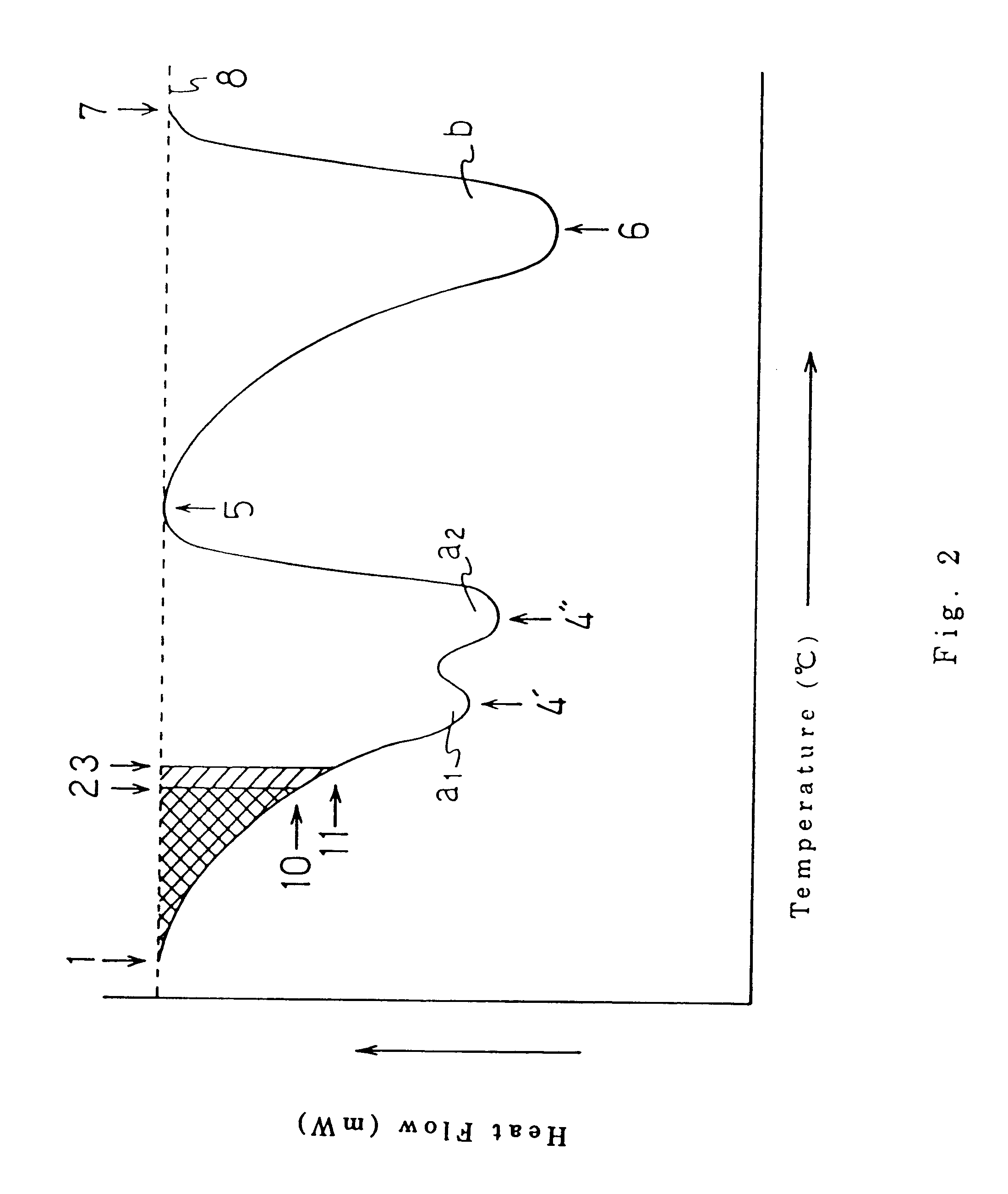Composite sheet comprising a non-woven fabric and a film
a non-woven fabric and film technology, applied in the field of composite sheets comprising non-woven fabrics and films, can solve the problems of increasing the weight and cost of products, not having a good touch, and not looking like high-quality products, and achieves the effects of low melting component, high melting point component, and easy production
- Summary
- Abstract
- Description
- Claims
- Application Information
AI Technical Summary
Benefits of technology
Problems solved by technology
Method used
Image
Examples
example 2
A commercially available composite spun bond non-woven fabric composed of polyethylene terephthalate (the melting point from DSC analysis was 260.degree. C.) as a core component and high density polyethylene (the melting point from DSC analysis was 129.degree. C.) as a sheath component at the volume ratio of 60:40 ("ELEVES," the product of UNITIKA, LTD, was used. The temperature of the position corresponding to 10% of the area from the side of the melting starting point of the endothermic peak of an entire conjugated fiber evaluated by DSC was 115.degree. C., and the temperature of the position corresponding to 20% of the area from the side of the melting starting point of the endothermic peak of the low melting point component of the conjugated fiber was 120.degree. C. The basis weight of a non-woven fabric was 20 g / m.sup.2. The fabric was preliminarily heated by using a far infrared radiation heater (the temperature of the surface of the non-woven fabric measured by the use of a h...
example 3
A conjugated fiber composed of polypropylene (the melting point from DSC analysis was 160.degree. C.) as a core component and linear low density polyethylene (the melting point from DSC analysis was 122.degree. C.) as a sheath component at the volume ratio of 50:50 was made by the melt spinning method by the use of an eccentric core and sheath type spinneret. The spinneret had 120 circular spinning holes with a diameter of 0.4 mm. The fibers spun out of the spinneret were introduced into an air sucker where stretching was conducted. Thus, a group of filaments were produced. Then, a group of filaments discharged from the air sucker were made to pass between a couple of vibrating wing-like tool for an opening. A group of the opened filaments was collected on an endless belt conveyor having a suction apparatus on its back face to form filament webs. At this time, the fineness of the filament was controlled to 2.2 d / f by varying the stretching rate of the air sucker. The resultant eccen...
examples 4 and 5
A conjugated filament composed of a core component and a sheath component at the volume ratio of 50:50 was made by the melt spinning method by the use of a concentric core and sheath type spinneret and made into conjugated filament web with a fineness of 3.5 d / f. Instead of using the low melting point component resin of the conjugated filament used in Example 3, an ethylene-octene copolymer comprising 2.0 wt. % of 1-octene and ethylene-octene copolymer comprising 13.4 wt. % of 1-octene (the melting points evaluated by DSC were respectively 121.degree. C. and 100.degree. C.) were used as the low melting point component resins in Examples 4 and 5. The temperatures of the position corresponding to 10% of the area from the side of the melting starting point of the endothermic peak of an entire conjugated fiber evaluated by DSC were respectively 92.degree. C. and 73.degree. C., and the temperatures of the position corresponding to 20% of the area from the side of the melting starting poi...
PUM
| Property | Measurement | Unit |
|---|---|---|
| Fraction | aaaaa | aaaaa |
| Fraction | aaaaa | aaaaa |
| Linear density | aaaaa | aaaaa |
Abstract
Description
Claims
Application Information
 Login to View More
Login to View More - R&D
- Intellectual Property
- Life Sciences
- Materials
- Tech Scout
- Unparalleled Data Quality
- Higher Quality Content
- 60% Fewer Hallucinations
Browse by: Latest US Patents, China's latest patents, Technical Efficacy Thesaurus, Application Domain, Technology Topic, Popular Technical Reports.
© 2025 PatSnap. All rights reserved.Legal|Privacy policy|Modern Slavery Act Transparency Statement|Sitemap|About US| Contact US: help@patsnap.com



